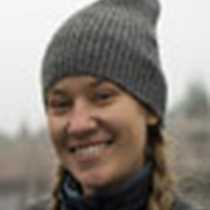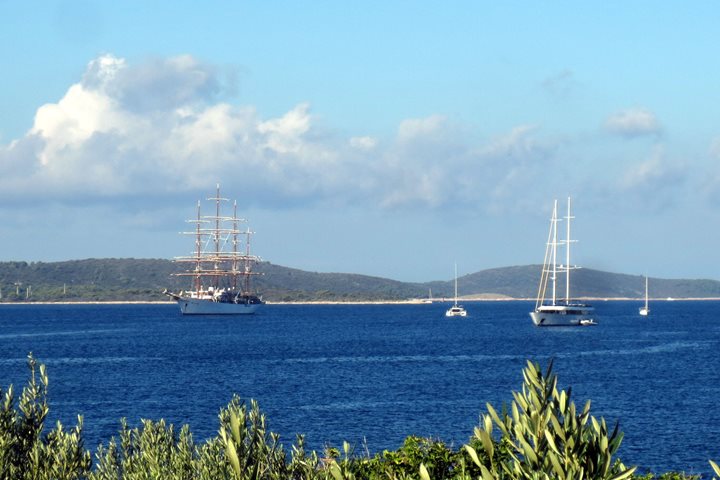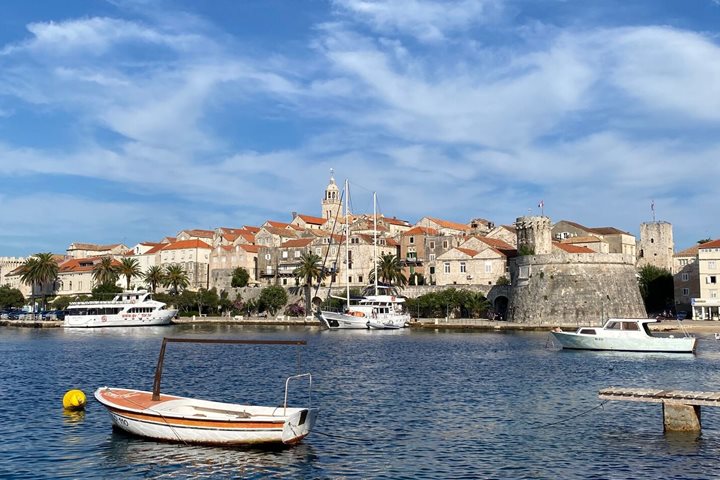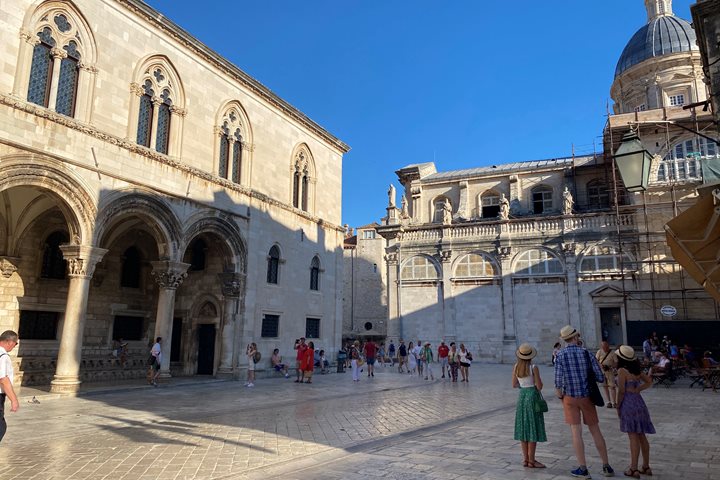The hardy among us were up on the Deck by 5:45 a.m. to experience the majestic passage through the Kotor fjord. This entrance to Montenegro always reminds me of Norway. Soaring bald grey limestone mountains rose up to 3,000 feet from the sea and surrounded us. The entrance to Perast and Kotor is the result of eons of abrasion as the many rivers that empty in the fjord carved their way to the sea and the land uplifted. In Tivat, we passed submarine pens carved into the living rock that once thwarted intelligence services but is now a luxury yacht marina and owned by the United Arab Emirates.
We docked alongside the city of Kotor and boarded our buses at 8:30 before motoring the few kilometers to the picturesque village of Perast. This hamlet once made its living from fishing, smuggling, and piracy. It was a strategic bastion of Venetian influence in the area. It was so important to the “Most Serene Empire” that the Doge and the Venetian Senate appointed the local governor. We first visited the postage stamp sized artificial island “Gospa od Skrpjela” in the middle of the fjord. There is a legend, which says fisherman found an icon floating near this spot. They retrieved it and brought it back to St. Nikolai’s church in town. The next day the icon was gone and fisherman found it floating at the same spot in the fjord. This cat and mouse game continued for some time. Finally, the fisherman decided that every time one of them passed this place they would drop rocks in the sea. Gradually it formed an island and in the end they erected a church to the Virgin Mary and placed her icon in the church on this island. Legends die-hard, and I will let you decide on the veracity of this one. Our next visit took us to what is today the local maritime museum, the elegant former home of the Venetian consul in Perast. Our final stop in Perast was for a brief rest at the elegant small Hotel Conté.
We then boarded our coaches for the wonderful walled city of Kotor. It is at the very head of the fjord and is a walled city. Unlike that which rings Dubrovnik, this wall encircles the city and rises up the side of the mountain. The weather could not have been better: it was sunny but not hot. Kotor remains an urban gem. The Cathedral of Kotor dedicated to the memory of the boy martyr St. Tryphon, is one of the finest Romanesque cathedrals in all of the Balkans. It has a magnificent white marble baldachin depicting the life of the martyr who was killed during the persecution under Emperor Valerian in 249. The frescoes adorning the arches are still colorful and were done by Greek icon painters, dating from the 13th century. We did a brief tour of this lovely late medieval city and walked the few hundred yards back to the Sea Cloud for our lunch.
At 3 p.m., we boarded busses for the madly scary ride up the side of the mountain and its exhilarating 25-switchback hairpin turns. It took an hour to get to the top, which is exactly 1 km high. Atop the mountain we encountered a seldom-visted village called Njeguši, where the famous wind and sun dried hams come from. Apparently the winds – the principle drying agent-- are perfect both morning and evening for drying the hams. We enjoyed prosciutto, local cheese, and wine or beer.
We cast off at 6:30 and assembled on the Lido Deck where our hard working and wonderful hotel staff greeted us on our return with oysters and champagne. We cruised from this fairy tale fjord in the evening twilight and made our way back into the Adriatic Sea.









